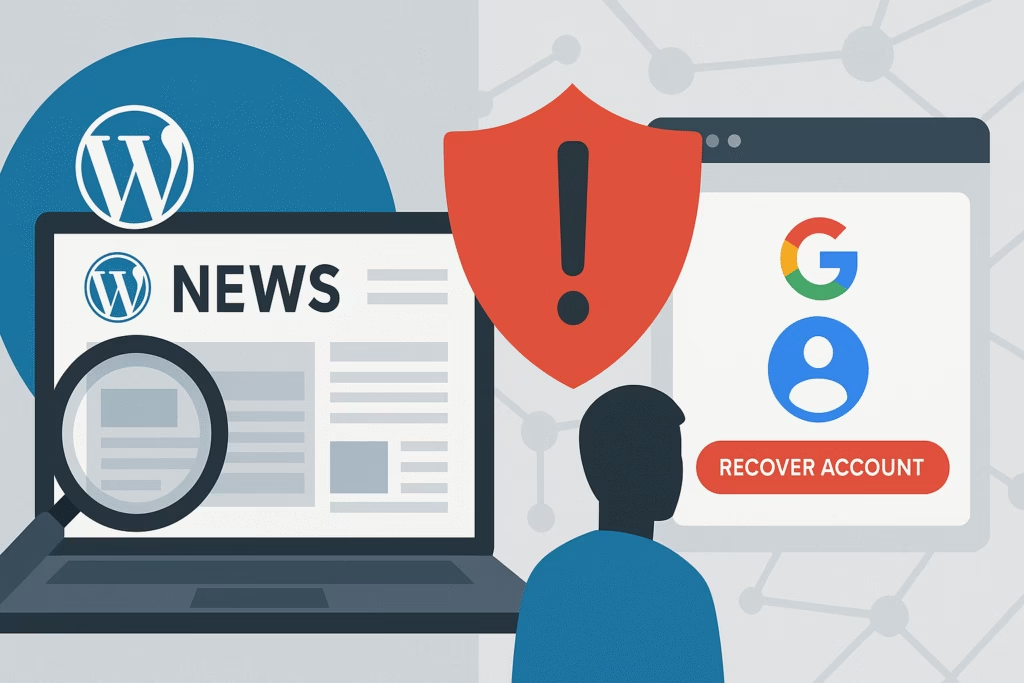
Cybercriminals have perfected the art of deception by impersonating the world’s most trusted brands to steal sensitive information and money from unsuspecting victims. Brand impersonation phishing attacks have skyrocketed by 220% in recent years, with major companies like Microsoft, Amazon, and PayPal being the most commonly spoofed brands. These sophisticated attacks exploit consumer trust in household names, making them particularly dangerous and effective.
Understanding how these brand impersonation schemes work is crucial for protecting yourself and your organization from falling victim to these costly attacks. This comprehensive guide explores the most targeted brands, common attack methods, and proven strategies to identify and prevent these deceptive threats.
The Rise of Brand Impersonation Phishing
Brand impersonation phishing represents one of the most sophisticated forms of social engineering attacks. Cybercriminals meticulously recreate logos, email templates, and websites of trusted companies to create convincing replicas that fool even tech-savvy users. According to the FBI’s Internet Crime Complaint Center, Americans lost over $10.3 billion to cybercrime in 2022, with phishing attacks accounting for a significant portion of these losses.
The effectiveness of these attacks stems from their psychological manipulation of trust. When recipients see familiar branding from companies they regularly interact with, their guard naturally lowers, making them more likely to click malicious links or provide sensitive information.
Why Major Brands Are Targeted
Cybercriminals strategically choose widely-used brands for several reasons:
- High user base: Popular companies have millions of customers, increasing the likelihood of successful targeting
- Trust factor: Established brands carry inherent credibility that reduces recipient suspicion
- Frequent communications: Regular legitimate emails from these companies normalize their presence in inboxes
- Sensitive data access: These platforms typically handle financial information, passwords, and personal data
Microsoft Phishing: The Corporate Favorite
Microsoft phishing attacks have become increasingly sophisticated, targeting both individual users and corporate environments. These attacks often impersonate Office 365, Outlook, or Microsoft Teams notifications, making them particularly effective in business settings.
Common Microsoft Phishing Tactics
Microsoft impersonation attacks typically follow these patterns:
- Account suspension warnings: Fake emails claiming your Microsoft account will be suspended unless immediate action is taken
- Security alerts: Fraudulent notifications about suspicious login attempts or security breaches
- Software update notifications: Fake update prompts containing malicious downloads
- OneDrive sharing requests: Deceptive file sharing invitations leading to credential harvesting pages
A recent study by Microsoft Security revealed that their brand is impersonated in approximately 57% of all phishing attempts targeting enterprise users. These attacks often bypass traditional email filters by using legitimate-looking domains and sophisticated email templates.
Identifying Microsoft Phishing Attempts
Legitimate Microsoft communications have specific characteristics that phishing attempts often fail to replicate perfectly:
- Official emails always come from verified @microsoft.com domains
- Microsoft never asks for passwords or sensitive information via email
- Legitimate security alerts include specific account details and timestamp information
- Official Microsoft emails contain proper grammar and professional formatting
Amazon Phishing: Exploiting E-commerce Trust
Amazon phishing attacks capitalize on the platform’s massive user base and frequent customer interactions. With over 300 million active users worldwide, Amazon represents an attractive target for cybercriminals seeking to steal payment information and personal data.
Popular Amazon Phishing Schemes
Amazon impersonation attacks commonly use these deceptive tactics:
- Order confirmation scams: Fake emails about expensive purchases designed to create urgency
- Account verification requests: Fraudulent messages claiming account suspension requiring immediate verification
- Prime membership renewal alerts: Fake notifications about automatic renewals or payment failures
- Delivery problem notifications: Deceptive shipping alerts requesting personal information updates
These attacks often include convincing order numbers, product images, and realistic pricing to enhance their credibility. The Federal Trade Commission reports that Amazon-related phishing attempts have increased by 400% during peak shopping seasons.
Red Flags in Amazon Phishing Emails
Recognizing fraudulent Amazon communications requires attention to these warning signs:
- Generic greetings: Legitimate Amazon emails use your actual name, not “Dear Customer”
- Urgent language: Phrases like “immediate action required” or “suspend account” are common phishing tactics
- Suspicious links: Hover over links to verify they lead to legitimate amazon.com domains
- Grammar errors: Official Amazon communications maintain professional standards
PayPal Phishing: Financial Fraud Focus
PayPal phishing attacks represent some of the most financially damaging brand impersonation schemes. Given PayPal’s role in processing payments and storing financial information, these attacks often yield significant returns for cybercriminals.
PayPal Phishing Attack Methods
Fraudulent PayPal communications typically employ these strategies:
- Account limitation notices: Fake emails claiming account restrictions due to suspicious activity
- Payment confirmation scams: Deceptive receipts for large transactions designed to prompt immediate response
- Security verification requests: Fraudulent two-factor authentication prompts
- Refund processing alerts: Fake notifications about refunds requiring account verification
According to cybersecurity researchers, PayPal phishing attempts have a success rate of approximately 23%, significantly higher than generic phishing campaigns. This effectiveness stems from the financial urgency these messages create.
Protecting Against PayPal Phishing
Implement these verification steps when receiving PayPal communications:
- Always log into your PayPal account directly through the official website
- Verify transaction details match your actual account activity
- Check sender email addresses for subtle misspellings or domain variations
- Enable PayPal’s official security notifications for legitimate account alerts
Advanced Brand Impersonation Techniques
Modern phishing attacks employ sophisticated techniques that make detection increasingly challenging:
Domain Spoofing and Typosquatting
Cybercriminals register domains that closely resemble legitimate company websites using techniques like:
- Character substitution: Replacing letters with similar-looking characters (e.g., “arnazon.com” instead of “amazon.com”)
- Domain extensions: Using alternative extensions like .net or .org instead of .com
- Subdomain manipulation: Creating deceptive subdomains like “amazon-security.phishing-site.com”
Social Engineering Psychology
Effective brand impersonation attacks exploit specific psychological triggers:
- Authority bias: People naturally trust communications from established companies
- Urgency pressure: Time-sensitive language creates panic and reduces critical thinking
- Loss aversion: Threats of account closure or financial loss motivate immediate action
- Familiarity comfort: Recognizable branding lowers natural skepticism
Comprehensive Protection Strategies
Defending against brand impersonation phishing requires a multi-layered approach combining technology, education, and best practices:
Technical Security Measures
- Email authentication: Implement SPF, DKIM, and DMARC protocols to verify sender authenticity
- Advanced threat protection: Deploy AI-powered email security solutions that detect sophisticated impersonation attempts
- URL filtering: Use web filtering tools to block access to known phishing domains
- Multi-factor authentication: Enable 2FA on all accounts to prevent unauthorized access even if credentials are compromised
Employee Education and Awareness
Human awareness remains the most critical defense against brand impersonation attacks:
- Conduct regular phishing simulation exercises using real-world scenarios
- Train employees to verify requests through alternative communication channels
- Establish clear reporting procedures for suspicious communications
- Create a culture of security awareness where questioning authenticity is encouraged
Incident Response and Recovery
When brand impersonation attacks succeed, rapid response minimizes damage:
Immediate Actions
- Disconnect affected systems: Isolate compromised devices to prevent lateral movement
- Change passwords: Update credentials for all potentially affected accounts
- Monitor financial accounts: Check for unauthorized transactions or changes
- Report the incident: Notify relevant authorities and affected service providers
Long-term Recovery Measures
Comprehensive recovery involves:
- Conducting thorough security assessments to identify vulnerabilities
- Implementing additional security controls based on lessons learned
- Reviewing and updating incident response procedures
- Providing additional training to prevent future incidents
The Future of Brand Impersonation Threats
As artificial intelligence and machine learning technologies advance, brand impersonation attacks are becoming increasingly sophisticated. Cybercriminals now use AI to create more convincing phishing emails, analyze social media profiles for personalized attacks, and generate realistic fake websites at scale.
Organizations must stay ahead of these evolving threats by investing in advanced security technologies and maintaining robust security awareness programs. The integration of AI-powered threat detection systems with human expertise provides the best defense against these sophisticated attacks.
Key Takeaways
Brand impersonation phishing attacks targeting major companies like Microsoft, Amazon, and PayPal represent a significant and growing threat to individuals and organizations. These attacks succeed by exploiting trust in familiar brands and creating psychological pressure that bypasses normal security instincts.
Effective protection requires:
- Understanding common attack patterns and red flags
- Implementing comprehensive technical security measures
- Maintaining ongoing security awareness training
- Developing robust incident response capabilities
- Staying informed about emerging threat trends
The fight against brand impersonation phishing is ongoing, requiring constant vigilance and adaptation to new attack methods. By combining advanced technology with human awareness and best practices, organizations can significantly reduce their risk of falling victim to these sophisticated threats.
Don’t let your organization become another statistic in the growing epidemic of brand impersonation phishing attacks. PhishDef provides comprehensive protection against sophisticated phishing threats, including advanced brand impersonation detection and real-time threat intelligence. Our AI-powered platform identifies and blocks fraudulent communications before they reach your users, while our security awareness training programs educate your team about the latest attack techniques. Contact PhishDef today to learn how we can help protect your organization from the evolving landscape of brand impersonation threats.


